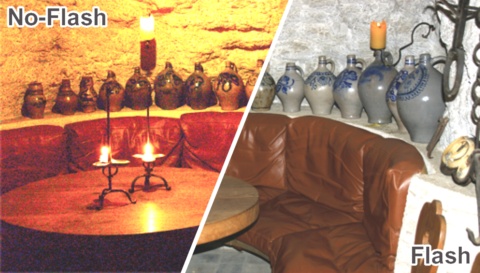Digital photography with flash and no-flash image pairs

ACM Trans. Graphics (SIGGRAPH), 23(3), 2004.
Combining detail of a flash image with ambient lighting of a non-flash image.
Abstract:
Digital photography has made it possible to quickly and easily take a pair of images of low-light
environments: one with flash to capture detail and one without flash to capture ambient illumination. We
present a variety of applications that analyze and combine the strengths of such flash/no-flash image
pairs. Our applications include denoising and detail transfer (to merge the ambient qualities of the
no-flash image with the high-frequency flash detail), white-balancing (to change the color tone of the
ambient image), continuous flash (to interactively adjust flash intensity), and red-eye removal (to repair
artifacts in the flash image). We demonstrate how these applications can synthesize new images that are of
higher quality than either of the originals.
Hindsights:
Equation (9) in the paper has a typo; it should be “Cp = Ap / Δp”.
I really like the image deblurring work of Yuan et al 2007 which uses a blurred/noisy image pair.
See also my earlier work on Continuous Flash (demo).
Additional results:
- Detail transfer / joint bilateral filtering -
view crops,
view full-resolution TIFFs (203 MB)
The crops can be viewed in the browser. The full-resolution images require a separate viewer.
Note that the cropped images are JPEG compressed and may contain small blocking artifacts. The full-resolution images are uncompressed, but therefore rather large. Some of these images may require gamma adjustments to your monitor to see the noise. Images tagged with "bilateral" were computed using a basic bilateral filter. - White-balancing - view images
- Continuous flash - view images, view video (Microsoft MPEG4 AVI, no sound)
- Red-eye - view images
See content copyrights.